
WARNING: This report contains graphic images and footage as well as references to ki 2023-11-1 19:0:30 Author: www.bellingcat.com(查看原文) 阅读量:17 收藏
WARNING: This report contains graphic images and footage as well as references to killing, mutilation and sexual violence that some readers might find distressing.
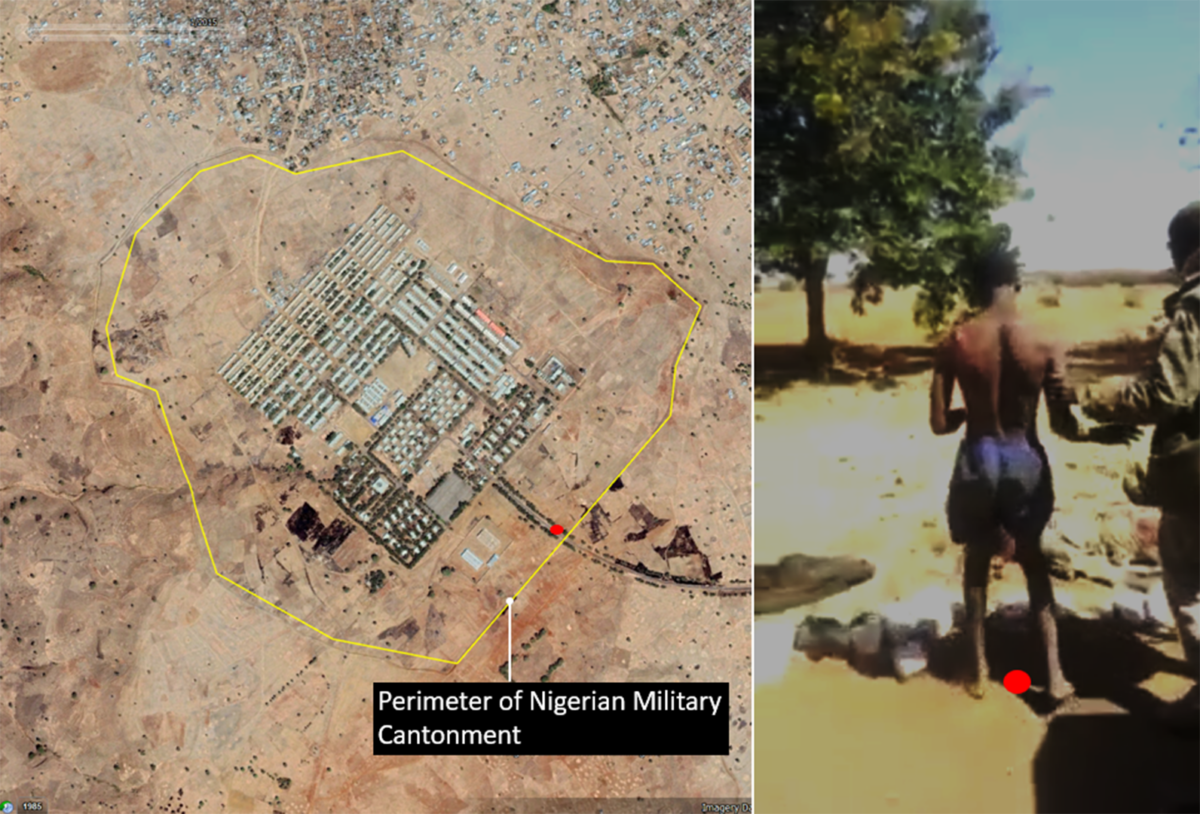
Confused, shirtless, barefoot and wearing only a pair of blue shorts; a young man is forced out of a pick up truck by a soldier.
Outside the vehicle the young man stands by a white rocky roadside curb on sand- coloured soil. At least two dead bodies are already lying on the ground.
Several voices can be heard insulting him, one says in English:
“Lie down there.”
The unarmed young man turns back briefly as he is forced to lie down. The shooter lifts his rifle; a total of nine gunshots ring-out and the young man lies still.
After the fatal shots are delivered, a shout of victory is heard.
This footage was captured in a twenty five second video obtained by our partners at Reuters from two independent sources. It was said to be of a military operation in Nigeria’s northeast, but neither the exact location nor the date was then known. Bellingcat and Reuters analysed the footage and cross referenced it with news reports, social media posts and satellite imagery to establish where and when the killing took place and who may be responsible.
Key Findings
Bellingcat has confirmed the young man in the blue shorts was executed inside the walls of the Abogo Largema Military Cantonment, a Nigerian Military barracks here, 10.591512, 12.193594, in Biu, Borno State, in the country’s northeast.
Available open source information suggests the young man was killed on January 14, 2015 after a Boko Haram attack on Biu.

He was likely killed around the same time or after Nigeria’s Defence Headquarters announced the attack had been repelled.
We have not been able to identify the young man nor establish whether he was involved in Boko Haram but have been able to confirm he was unarmed when killed.
This is a violation of International Humanitarian Law (IHL), including Common Article 3 of the Geneva Conventions, according to Morris Tidball-Binz UN Special Rapporteur on extrajudicial, summary or arbitrary executions.
According to Tidball-Binz, the evidence in this case is clear:
“This is an unlawful killing- very, very clearly so. An extrajudicial execution. “
He added that the young man is totally defenceless when shot several times. The video shows the young man was unarmed and posed no immediate threat when he was shot.
At the time the young man was killed, the barracks was home of the 231 Tank Battalion and the 331 Artillery Regiment which are both part of the 3 Division of the Nigerian Army.
Available open source evidence indicates the shooter is a member of the Nigerian military, likely a soldier. The shooter wore an insignia consistent with the ranks of corporal or lance corporal. The identification marks on his rifle appear to be consistent with identification marks seen in rifles from the 331 Artillery Regiment of the Nigerian army. However, Bellingcat couldn’t independently verify his identity.
The same day of the execution-style killing, other bodies appear to have been brought from unknown locations and laid next to the body of a young man in blue shorts.
Although it is not clear how they died, some of these bodies presented severe injuries, some were photographed with their genitals exposed.
Multiple photos were taken of the bodies inside the barracks with Nigerian soldiers present- in one a soldier from the 231 Tank Battalion can be seen posing with bodies behind him including a young man in blue shorts. Bellingcat found the young man in the video is most likely the same dead young man seen in the pictures.
Images were also displayed on the Nigerian Defence Headquarters website- throughout 2015 but are no longer available. One of these images remains on the former Defence Headquarters spokesman’s Twitter account.
In addition to the killing of the young man, Bellingcat found evidence of another incident inside the barracks- indicating the events of January 14, 2015 were not a one-off. Bellingcat geolocated an image of a man holding a severed head within the same military barracks in Biu, in the presence of military personnel. The image circulated on social media in October 2014, just two months before the killing of the young man at the barracks.
Bellingcat and Reuters contacted Nigeria’s Ministry of Defence, Defence Headquarters and army leaders but they did not respond to detailed requests for comment for this story.
General Christopher Musa, previously the top commander of the counterinsurgency campaign in the northeast, and now Nigeria’s defence chief, told Reuters in November last year- in relation to a previous request for comment- that the military complies with international laws prohibiting attacks on civilians and noncombatants.
Musa said the military also adheres to its own rules of engagement and to training on human rights provided by the United States, the UK and the United Nations. He did not respond to questions for this story.
In a series of messages on Twitter in 2019, the Nigerian Army said that it does not encourage or condone indiscipline or unprofessional conduct including extrajudicial execution of suspects or combatants. Adding that when these kinds of incidents are reported and confirmed perpetrators are usually immediately punished. The Nigerian Army will continue to operate in line with local and international law, it concluded.
The Nigerian Military and the Fight Against Boko Haram
The Nigerian Military has been engaged in a 14-year war against Boko Haram, an extremist Islamist group, that emerged in the early 2000s with the goal of establishing an Islamic state in Nigeria. Boko Haram have carried out numerous attacks, including suicide bombings, mass abductions, and targeted killings, resulting in an armed conflict and according to Amnesty- the displacement of more than a million people.
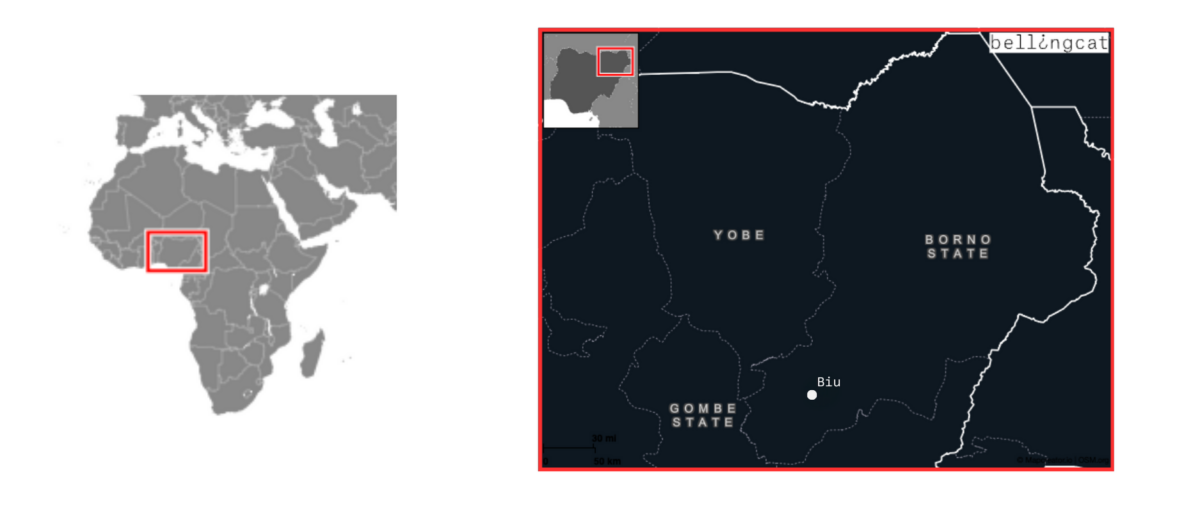
The International Criminal Court has outlined that the situation in northeast Nigeria appeared to have met the criteria for an armed conflict of non-international character since at least May 2013. This is significant as international humanitarian law applies in non-international armed conflicts.
The Nigerian military’s operations against Boko Haram has involved multiple allegations of human rights abuses and by 2015 Amnesty International had documented cases of arbitrary arrests, torture, and unlawful executions committed by the Nigerian Military.
This includes the killing of at least 640 men and boys– mostly recaptured detainees– who had been briefly released during a Boko Haram attack on the military detention facility at Giwa barracks on March 14, 2014.
Additionally, the Civilian Joint Task Force (CJTF), set up by authorities to work with security forces, have also been implicated in carrying out extrajudicial killings.
In September 2019 Agnes Callamard, then the UN Special Rapporteur on extrajudicial, or arbitrary executions concluded that there had been little progress towards accountability for violations by the Nigerian Army.
Finding the Young Man in the Blue Shorts
At the time of his killing the young man was wearing only a pair of blue shorts.
Reverse search image tools are usually good at focusing on sharp colours and patterns featured in an image. Initially, we tried to use reverse searches to find the scene focusing on blue shorts, but the resolution of the video was too low.
As an alternative, we turned to a visual search technique which consists of manually finding similar images from other unrelated incidents but in higher resolution.
Because initial information suggested the incident occurred in Nigeria, we found other images online showing the aftermath of fighting in Nigeria and depicting men in blue shorts, as shown in the example below.
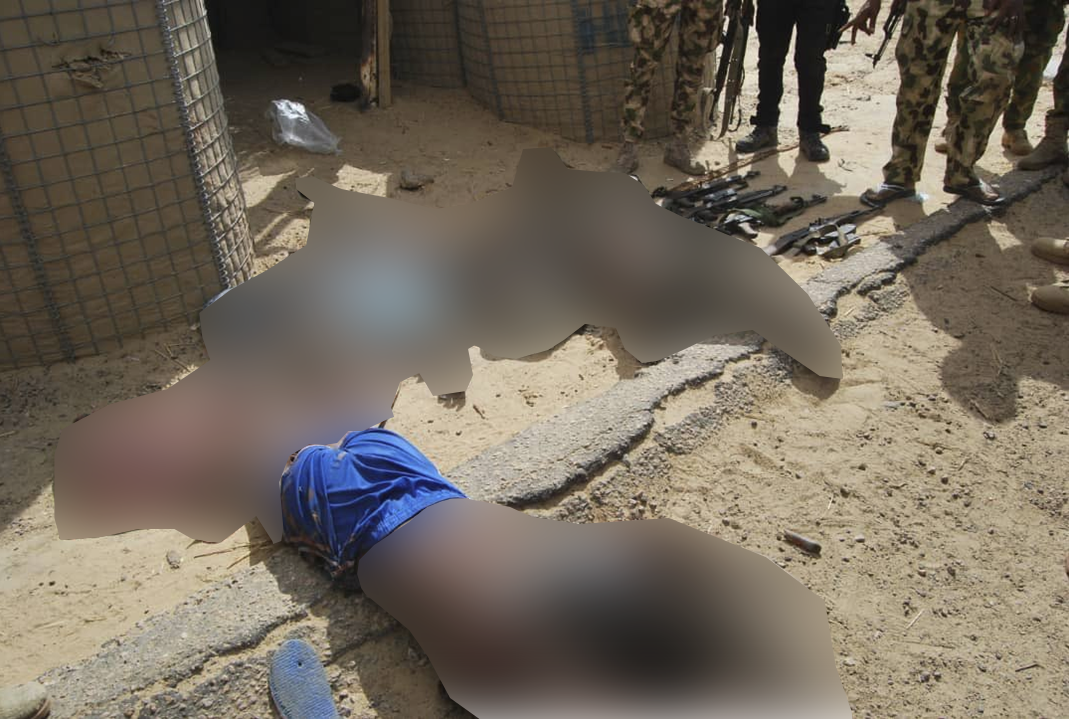
Using this image as a new, higher resolution input in reverse searches we obtained a new image that featured soldiers and more than a dozen dead bodies on the ground.
The bodies were next to a roadside curb of white rocks and a patch of dried grass-similar to the features seen in the video of the killing.
This image was one of a series of pictures circulated on social media on January 14, 2015 showing the aftermath of an alleged Boko Haram attack in Biu, Borno State, Nigeria.
One of the bodies pictured lying on the ground was a young male wearing blue shorts. This time the pair of blue shorts were not a random coincidence.
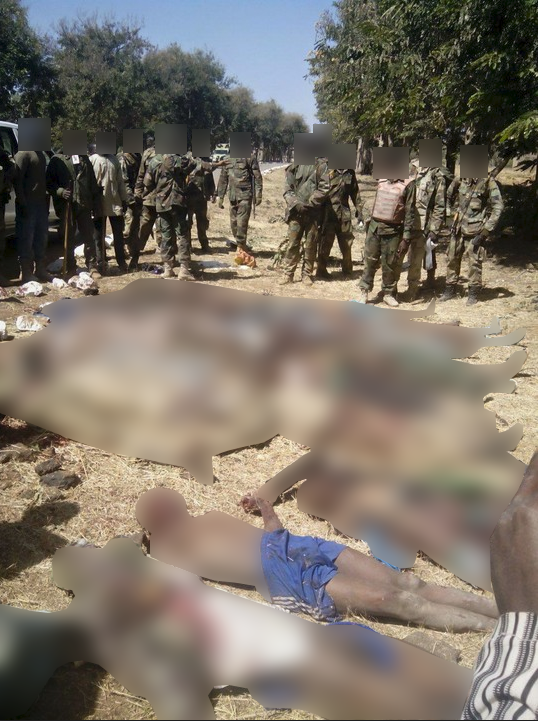
After finding more associated imagery on social media, we noticed that this young man had three particular marks- two on his legs and one on his left foot.
When compared to the young man in the video, we see the same marks in the same position on the young man before he was executed.


Additionally, the young man in the video had a bleeding left hand which was also visible on the dead body in the pictures. We also noticed the face of the dead body was covered in blood and the blue shorts had three white stripes on the side.
In addition to the physical matches we found between the young man in the photos and the video, further geolocation work revealed other matches between the images and the video – showing they were taken at the same location on the same day and in the same time window. All of these factors indicate the young man in the video is most likely the same dead young man seen in the pictures.
We also showed the video and images to Forensic Expert Danilo De Angelis from the LabAnOF at the University of Milan. He said that the low resolution of the images meant he could not make conclusive findings, however he was able to make some remarks about the visual evidence.
- No macroscopic [visible to the naked eye] dissimilarities emerge from the comparisons that could suggest an exclusion of identity.
- On the body of the individual being taken out of the vehicle, some dyschromic areas [skin discolouration] are visible , which can also be observed on the subject in the photographs. In particular, they can be seen on the front of both legs and on the chest around the external area
- The presence of bloodstains on the photographed boy’s face is consistent with the mode of execution (seen in the video), which appears to involve predominantly the head being struck by firearm shots.
- The apparent age of the individual corresponds to a subject seemingly between 15-20 years old but could be slightly younger or older than this proposed age interval.
Further geolocation helped reveal other matches between the images and the video.
Finding The Site of the Killing: The Nigerian Military Barracks
We analysed the video frame-by-frame, looking for details that could help us understand the scene of the killing better and assist in the geolocation process.

We found an image circulating on social media and displaying a group of dead bodies including a young man in blue shorts.
We overlapped this image with a stitched panorama from the video. In particular the trees, wall and the white rocky roadside curb matched. The overlap helps demonstrate that the video and images were taken at the same location.
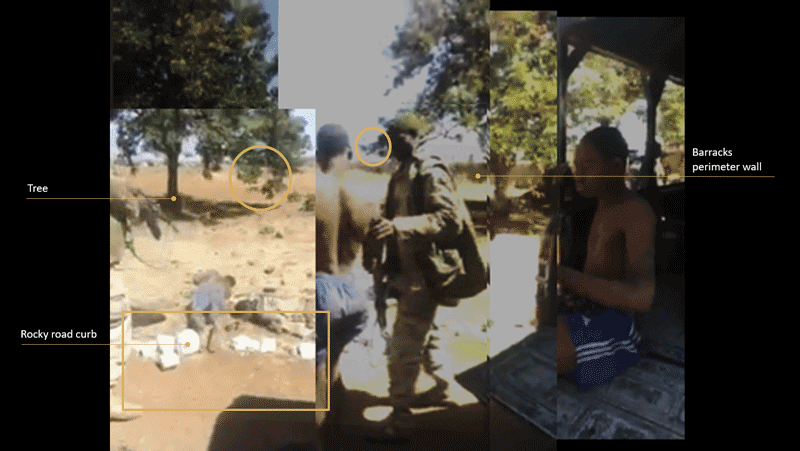
These features also correspond to elements seen in satellite imagery, captured six days after the alleged Boko Haram attack.

All the visual evidence analysed indicates that the killing of the young man in the blue shorts took place within the perimeter of the military barracks “Abogo Largema Military Cantonment” here, 10.591512, 12.193594, just inside the main gate.
Social media posts indicate that this barracks was the headquarters of the 231 Tank Battalion and the 331 Field Artillery Regiment (both part of the 3 Division of the Nigerian Army) and both were involved in repelling the Boko Haram attack on Biu on January 14, 2015. Reuters also found that the 231 Tank Battalion and the 331 Artillery Regiment were involved in repelling the January 14 attack.
Who Killed the Young Man in the Blue Shorts?
Available visual evidence suggests that a soldier wearing military uniform and rifle consistent with those used by Nigerian soldiers, was responsible for carrying out the execution-style killing.
The identification marks on the rifle used to shoot the young man in the blue shorts appear to be consistent with identification marks seen in rifles from soldiers associated with the 331 Artillery Regiment in Biu. However, Bellingcat couldn’t independently verify these details, nor the identity of the soldier.
Bellingcat analysed dozens of social media images featuring soldiers linked to the 231 Battalion and 331 Regiment between 2014 and 2017. We found the 231 Battalion had black numbering on the stock of the rifles and the 331 Regiment had white numbering. In the video you can just make out white numbering on the butt of the rifle used to kill the young man.

In some rifles the 331 Regiment number appeared diagonally on the right-hand side of the stock which is consistent with the markings seen on the rifle used to carry out the killing.

Although the resolution of the video is very low, the identification number of the rifle is visible on the left-hand side of the stock. The digits appear to read “61”. This is consistent with identification numbers seen in rifles from soldiers associated with the 331 Regiment. However, further confirmation is needed.
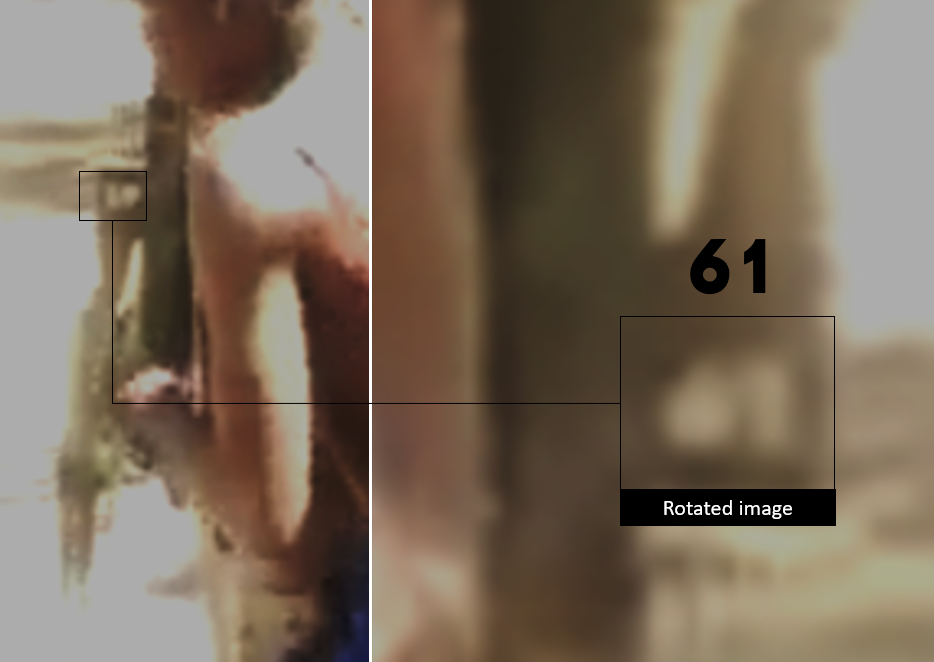

A second clue from the video comes from a blurred view of the insignia of the person carrying out the killing. The insignia appears to be consistent with the ranks of Corporal or Lance Corporal according to the Nigerian military ranks. Section 110 of Nigeria’s criminal code makes it illegal to falsely wear the uniform of the Armed Forces in Nigeria.

In addition to examining the rank and weapon of the soldier who carried out the killing, we also identified matching features with a man seen standing over bodies in two images circulated on January 14 , 2015 in the aftermath of the Boko Haram attack. The soldier in the video and images is distinct, as he is the only one wearing a light coloured uniform, a hooded jacket and a green hat out of all the soldiers visible in the images. Visual evidence indicates the man seen in the images circulated on January 14 , 2015 is likely the same man seen carrying out the execution-style killing in the video. Further analysis is needed to confirm his identity and his rank.


Other Soldiers Present
Open source evidence indicates Nigerian military personnel were present during and after the killing of the young man at the barracks.
Images posted on social media show soldiers taking photos of the bodies. One soldier posted a photo of himself holding a rifle consistent with the 231 Tank Battalion just inside the military barracks where the young man was executed; “i look in the mirror all i see is blood…” he says in the post.
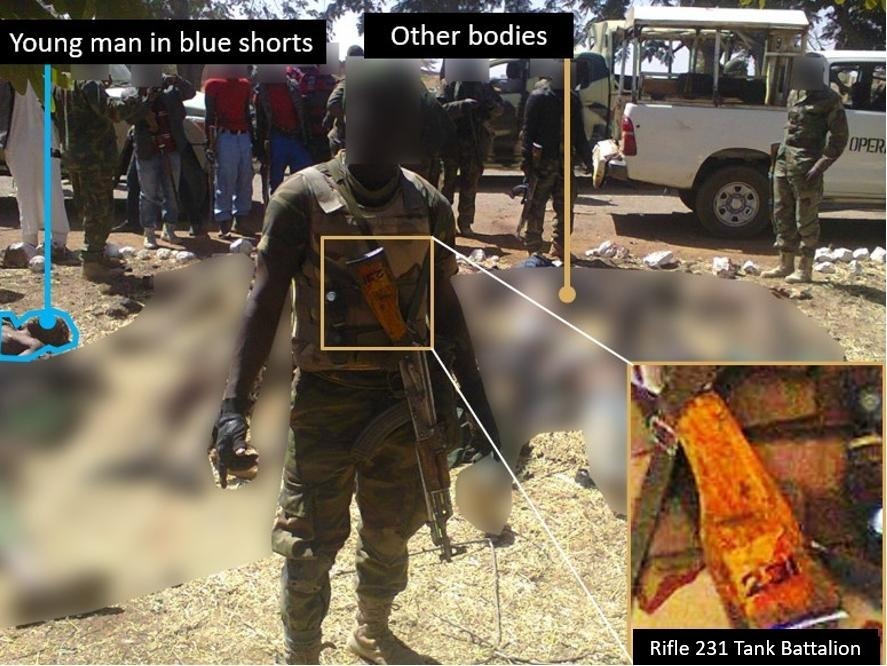

Reuters spoke to a number of sources about the events of that day- you can read their full report here.
Timeline of Boko Haram Attack and Killing of the Young Man in Blue Shorts
Early on January 14 claims that Biu was under attack from Boko Haram were posted on social media. About 9am local time, messages circulated claiming the military barracks was under attack.
But by 11:17am local time, the Nigerian Defence Headquarters stated on Twitter that a terrorist attack had been repelled by the military in Biu.
Bellingcat analysed solar data to establish when the killing may have occurred.
A rough estimate using all the solar data suggests that the killing of the young man most likely took place at around noon between 11am and 1pm. Based on this estimate, it is likely the killing took place around the time or after the Nigerian Defence Headquarters announced hostilities had ceased.
The shadows cast by the person who carried out the killing in the video suggests that the sun was striking from the south and not perpendicular to the road. The solar elevation seems to be consistent with angles between 52-58 degrees which correspond to times later than 11am.
A bullet casing was also photographed on the spot after the young man was killed, when other dead bodies were laid out next to him. Solar data indicates the picture of this bullet casing was taken between approximately 12-1pm.
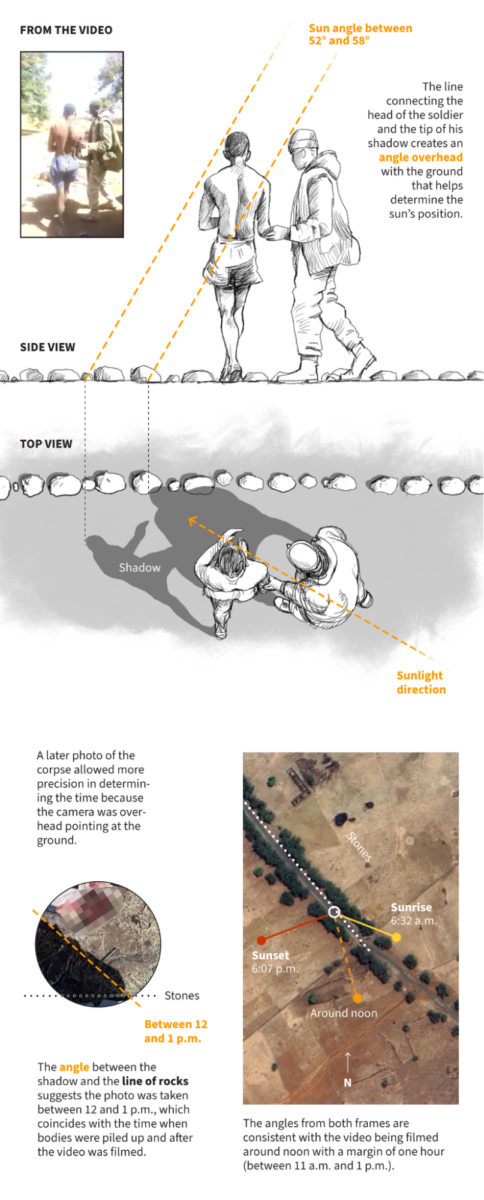
Separate to this incident, Bellingcat also found images on Facebook uploaded at 12:15 local time on the same day that appear to show bodies that had been mutilated, beheaded and burned in the town of Biu. Bellingcat geolocated the violent scenes to a sector called Mbulamel (10.628186, 12.186561) in Biu, approximately three kilometres north from the military barracks.
Display of Young Man in Blue Shorts and Other Bodies in the Barracks
Back at the barracks, Facebook posts with images of a young man in blue shorts appeared online by 2:46pm local time on January 14, 2015.
The pictures show him surrounded by a dozen other dead bodies.
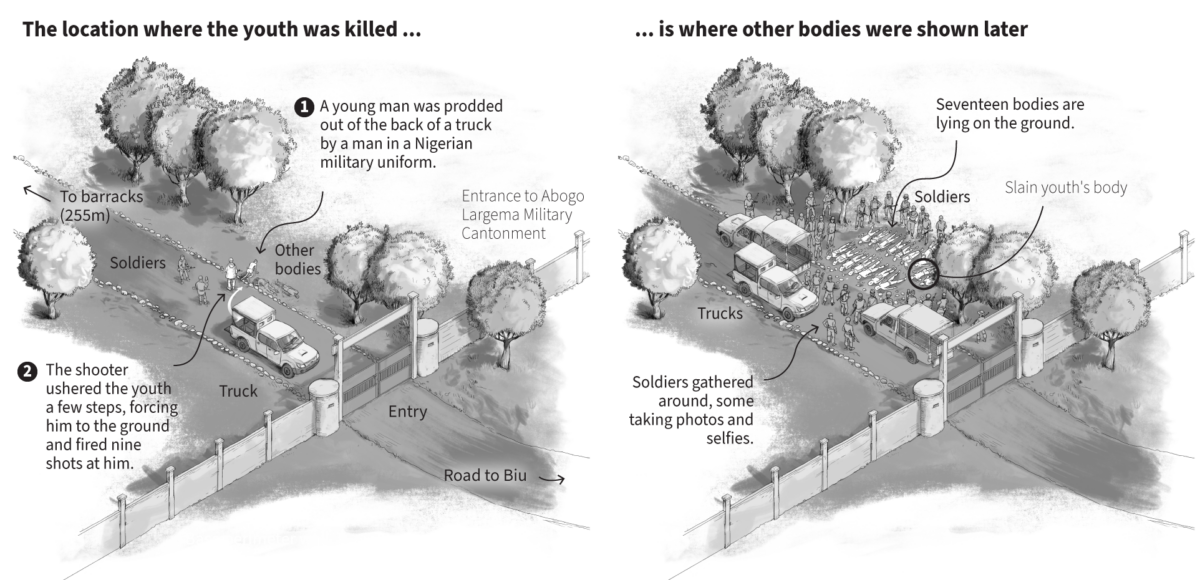
The next day on January 15, 2015, the Nigerian Defence Headquarters posted pictures [Warning, this links to graphic images] on their official website under the headline:
“PHOTOS: AFTERMATH OF THE BIU OPERATION”
We analysed one of the images titled “Remains of terrorists after the attack” and determined it most likely featured the dead body of the young man in blue shorts from the video- among a dozen other alleged Boko Haram fighters, in the exact spot where the killing took place.
By January 2016, these images were no longer available on their website.
However it remains on the former Nigerian Defence Headquarters spokesman, Chris Olukolade’s Twitter page, where it was posted on January 15, 2015 [Warning, this links to graphic images].

Separately we uncovered images posted on social media showing a white truck loaded with dead bodies. One of them presented severe injuries to the head. We managed to match four of the bodies in the truck to those laying on the ground next to the young man in blue shorts, inside the barracks.
Based on the position of the rocky roadside curb, the position of the bodies, the truck and the soldiers in the images we were able to create a rough chronological progression. This information strongly suggests that some of the bodies were brought to the site of the killing from an unknown location.
Although we aren’t showing the images here due to their gruesome nature, the dirt on the faces of some of the dead bodies, their injuries, marks and position of their clothes strongly suggest that some of the bodies were likely dragged and rearranged around the young man in the blue shorts at the site of the killing- not long after we was shot.
At least two bodies seen in the images were displayed with their genitals exposed.
These displays could violate requirements to respect the dead, as outlined in International Humanitarian Law and could constitute ‘outrages upon personal dignity’ according to two experts in international humanitarian law that Reuters spoke to.
Additional Incident at the Same Barracks
Bellingcat also found and geolocated images showing a man holding a severed head of an alleged Boko Haram fighter inside the same Nigerian military barracks- Abogo Largema Military Cantonment in Biu in the presence of soldiers here, 10.594139,12.192138. He can be seen holding surgical scissors. Preliminary evidence indicates that he was likely linked to the Civilian Joint Task Force (CJTF) but we could not confirm his identity.
The images circulated online in late October 2014, two months before the young man in the blue shorts was killed. They were taken further inside the barracks approximately 350 metres away from the main gate.


The video and pictures analysed by Bellingcat with further investigation by Reuters raise important questions as to whether these incidents are part of isolated cases of misconduct by soldiers and affiliated groups or whether it indicates a pattern of conduct of atrocities carried out within the Abogo Largema Military Cantonment and Nigerian military facilities. Reuters has previously reported on killings of children and teenagers by the army in Nigeria’s northeast.
Many questions remain about the extrajudicial killing of the young man. In particular, whether he was counted as a combatant killed in battle by the Nigerian military, and if not- how his death was explained. We put this question and others as well as details of our findings to Nigeria’s Ministry of Defence, Defence Headquarters and army leaders but did not receive a response.
Calls for an Inquiry
UN Special Rapporteur Morris Tidball-Binz said that authorities should carry out a prompt, impartial investigation into the killing of the unarmed young man in the blue shorts.
In 2020 the prosecutor of the International Criminal Court said there was “a reasonable basis to believe” that war crimes and crimes against humanity had been committed in the conflict by Nigerian security forces and by Islamist insurgents. It has not yet opened a formal investigation.
In response to a request for comment from Reuters, the ICC’s Office of the Prosecutor said that it could not comment on specific incidents “at this stage.”
It said the prosecutor is engaging with the new Nigerian government that took office earlier this year about the “next steps to be taken regarding accountability for the alleged crimes committed in Nigeria, and to find ways to deepen cooperation in addressing these crimes.”
The US State Department said in a statement to Reuters that it was only made aware of the Biu incident recently through the Reuters inquiry and was seeking more information about it.
“We urge Nigerian authorities to investigate these allegations in a timely and transparent manner, and to hold those responsible to account,” the department said.
Amnesty International previously documented at least 1,200 extrajudicial killings in 2015 in the Nigerian military’s war against Boko Haram. Bellingcat and Reuter’s findings add further evidence of this practice.
Although we identified key details about the killing of the young man in the blue shorts including possible culprits and location inside a Nigerian Military base, we and our partners Reuters, were unable to establish any further details about the young man seen in the video.
As Amnesty outlined in their report in some cases, the bodies of executed detainees were returned to their families, usually dumped near the houses or on the outskirts of the villages. In other cases, the families were never officially informed of the deaths of their relatives and found out about their deaths from released detainees or eyewitnesses. In many cases, they never found out at all.
Bellingcat is a non-profit and the ability to carry out our work is dependent on the kind support of individual donors. If you would like to support our work, you can do so here. You can also subscribe to our Patreon channel here. Subscribe to our Newsletter and follow us on Twitter here and Mastodon here.
如有侵权请联系:admin#unsafe.sh